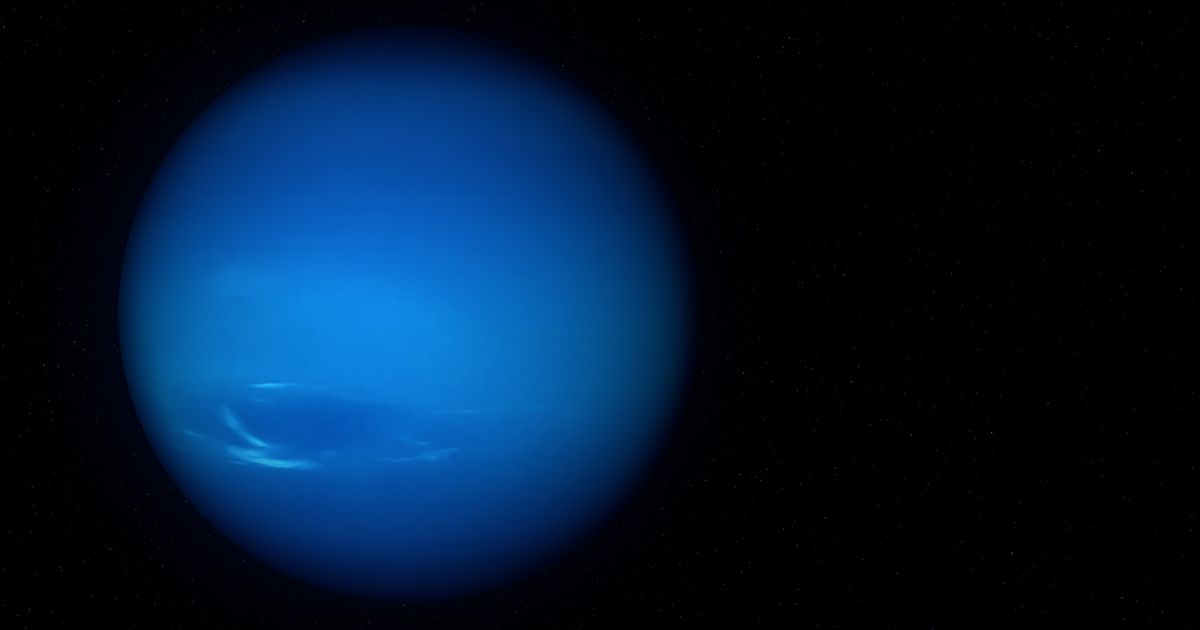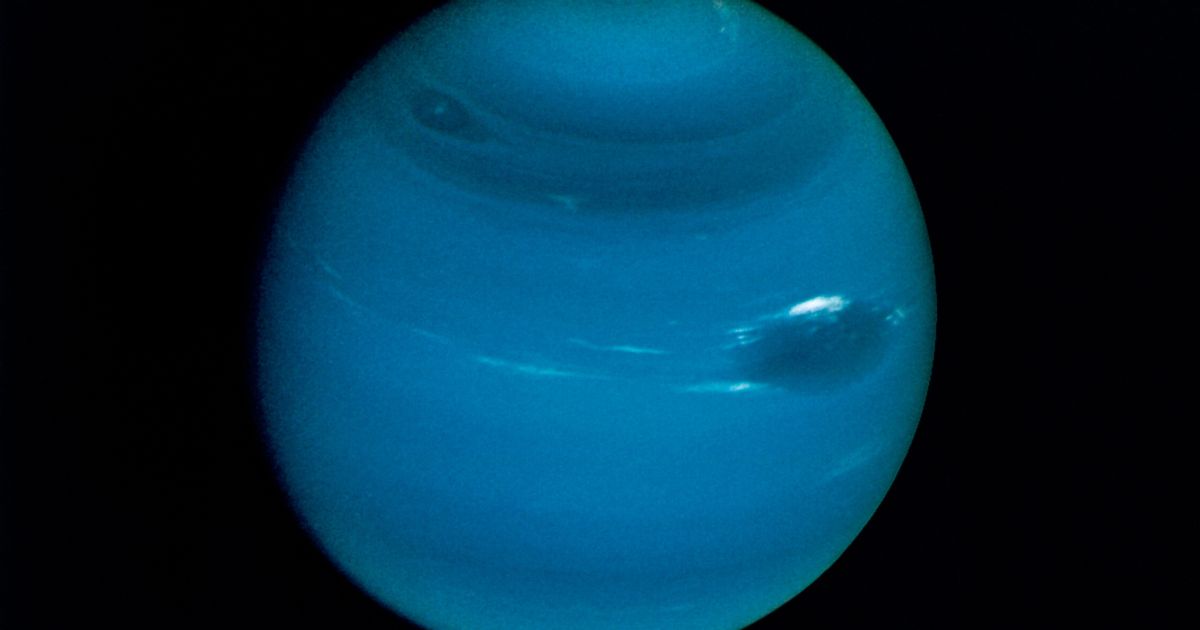As the farthest planet from the Sun, Neptune is a fascinating blue gas giant that is unique in many ways. Learn more about its sheer beauty with some fun facts and thought provoking questions for more curious explorers.

Neptune as seen from space
35 Crazy Fun Facts about Neptune
Neptune is the 8th planet from the Sun.
Neptune is the farthest planet from the Sun.
Neptune is the 4th largest planet in the Solar System.
It is one of the 4 gas giant plants.
It was named after the Roman god of the Sea.
Its atmosphere is made of methane, hydrogen, and helium.
It is blue in color due to the large amounts of methane in its atmosphere.
Winds in its atmosphere can reach up to 1,200 miles per hour.
These are the fastest winds ever recorded in the solar system.
It takes 165 years for Neptune to complete one revolution around the Sun.
Neptune only takes 16 hours to rotate, contributing to its ruthless storms.
Neptune is, on average, 2.7 billion miles from the Sun.
Neptune was discovered in 1846 by Johann Gottfried Galle.
Urbain le Verrier is famous for correctly predicting Neptunes location in 1811.
It has a mass 17 times greater than Earth’s.
Neptune has 14 known moons.
The largest moon is called Triton.
Triton is the only moon in the solar system that spins around its planet in a retrograde direction.
This means that Triton spins a different direction than it orbits Neptune in.
Triton was most likely captured in Neptune’s gravity, not formed from the planet due to its size.
Neptune’s second largest moon, Proteus, has a surface filled with craters.
Nereid, another moon, orbits so close to Neptune that it is within its rings.
Neptune, like Jupiter and Saturn, has rings.
The planet has 5 distinct rings.
Neptune’s rings are believed to be very young.
The rings are made of dust particles, ice, and small rocks.
Neptune’s rings are always changing as new particles are being added with some particles being lost.
The rings were discovered in 1984 by the Voyager 2 spacecraft.
Voyager 2 is the only spacecraft to have visited Neptune.
A Great Dark Spot was seen on Neptune but it disappeared before the Hubble Space Telescope took pictures of the planet.
It is thought that this spot was a large storm, similar to Jupiter’s Giant Red Spot.
The average temperature on Neptune is FREEZING!!! About -353 degrees Fahrenheit (-214 degrees Celsius)!
Neptune’s magnetic field is tilted 47 degrees from its rotational axis.
The dwarf planet Pluto has a strange elliptical orbit, which means it is sometimes closer to the Sun than Neptune.
Neptune has almost the same gravitational pull as Earth.

Up-Close Image of Neptune
Frequently Asked Questions; Learn More About Neptune!
How many Moons does Neptune have?
Neptune has a total of 14 moons. Triton is the largest moon and it has a retrograde orbit meaning it spins in a different direction than its orbit. Another moon, Proteus, is littered with craters. In addition, the moon Nereid is so close to Neptune that it orbits within the rings.
How did Neptune get its name?
Neptune was named after the Roman god of the sea due to its dark blue color.
What Color is Neptune?
Neptune is blue because of the large amounts of methane in its atmosphere. The methane absorbs all red light, leaving the planet to become a big blue giant.
What is Neptune made of?
Neptune is a gas giant meaning it has a fully gas atmosphere with no surface. The atmosphere is abundant with hydrogen, helium, and methane. Its core is made of rock and metal.
How far is Neptune from the Sun?
Neptune is on average 2.7 billion miles from Earth, making it the farthest planet from the Sun.
How long would it take to get to Neptune?
It would take about 12 years for a spacecraft to reach Neptune. This was about the length it took Voyager 2 to reach the planet in 1989.
How Cold is Neptune?
Neptune is the second coldest planet from the sun with temperatures reaching as low as -353 degrees fahrenheit (-215 degrees Celsius).
How many Rings does Neptune have?
Neptune has 5 rings. Each is named after astronomers that made significant discoveries about the planet.

Image of Neptune’s Great Dark Spot
There you have it, curious space explorers! Neptune, the ice giant, continues to be studied and researched due to its astounding beauty. Maybe someday you’ll be the one discovering a new moon or ring for this amazing planet!
Want to learn more about the planets in our solar system? Check out these other articles:

Leave a Reply